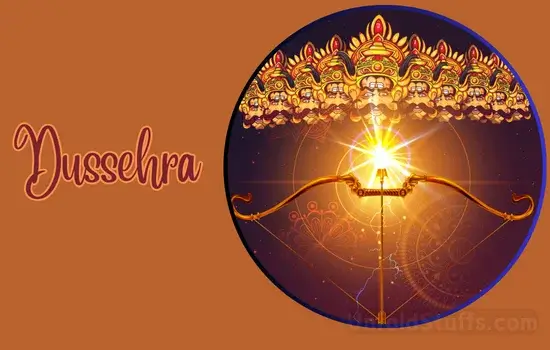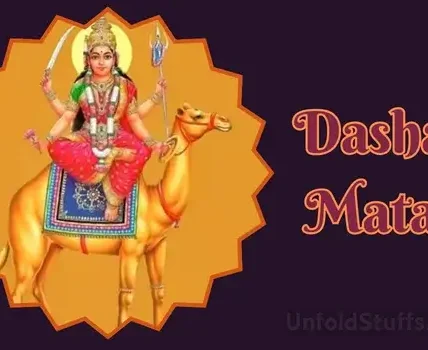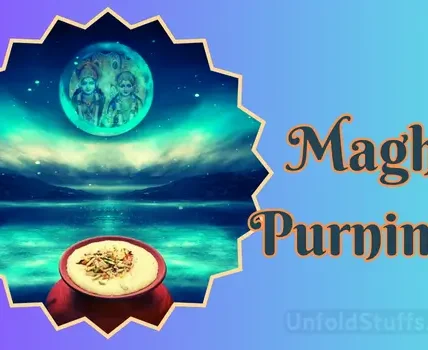Dussehra, also known as Vijayadashami, is a big Indian festival celebrated to mark the victory of good over evil. It comes at the end of the nine-night festival called Navaratri. The main story behind Dussehra is from the epic Ramayana, where Lord Rama defeated the demon king Ravana to rescue his wife, Sita.
People celebrate this day by watching plays and performances called Ram Lila, which show the story of Lord Rama. In many places, huge effigies of the demon king Ravana are built and then burned in open spaces to symbolize the victory of good. People also worship Goddess Durga during this time. Dussehra is a time for joy, cultural events, and the start of new things.
Dusshera / Vijaydashmi 2024 Puja Date and Time
Dusshera / Vijaydashmi 2024 |
||
| Event | Date & Time | Day |
| Vijaydashmi | 12th October, 2024 | Saturday |
| Vijay Muhurat | 02:03 PM to 02:49 PM on 12th October, 2024 | Saturday |
| Bengal Vijayadashami | 13th October, 2024 | Sunday |
| Aparahna Puja Time | 01:17 PM to 03:35 PM on 13th October, 2024 | Sunday |
| Dashami Tithi Begins | 10:58 AM on Oct 12, 2024 | Saturday |
| Dashami Tithi Ends | 09:08 AM on Oct 13, 2024 | Sunday |
| Shravana Nakshatra Begins | 05:25 AM on Oct 12, 2024 | Saturday |
| Shravana Nakshatra Ends | 04:24 AM on Oct 13, 2024 | Sunday |
Facts About Dusshera / Vijaydashmi 2024 Puja Date and Time
- Symbolic Victory: Dussehra symbolizes the victory of Lord Rama over the demon king Ravana, emphasizing the triumph of good over evil.
- Navaratri Celebration: Dussehra is the culmination of Navaratri, a nine-night festival dedicated to the Goddess Durga and her various forms.
- Ram Lila Traditions: Ram Lila, dramatic reenactments of episodes from the Ramayana, are performed during Dussehra to narrate the life and victories of Lord Rama.
- Effigy Burning Ritual: One of the most iconic customs involves building tall effigies of Ravana, Kumbhakarna, and Meghnad, which are then burned in public as a symbolic act of destroying evil forces.
- Regional Variations: Different regions in India celebrate Dussehra uniquely. For example, in Mysuru, Karnataka, there is a grand procession, while Kullu, Himachal Pradesh, hosts a week-long fair.
- Goddess Durga’s Farewell: In some areas, Dussehra marks the farewell of Goddess Durga, and her idols are immersed in water, symbolizing her return to the celestial abode.
- Auspicious Beginnings: Dussehra is considered an auspicious time to start new ventures or endeavors, reflecting the positive and victorious energy associated with the festival.
- Cultural Programs: Festivities during Dussehra include cultural events, fairs, and processions, bringing communities together to celebrate the triumph of righteousness.
- Educational Significance: The festival also highlights the importance of education, as it is believed that Goddess Saraswati, the deity of knowledge, blessed Lord Rama during his battle against Ravana.
- Marking the End of Agyatvas: According to the Ramayana, Dussehra also marks the end of Lord Rama’s 14 years of exile (Agyatvas), as he returned to Ayodhya after defeating Ravana. This aspect adds a historical and narrative significance to the festival.
Check All Hindu Festival Date, Shubh Muhurat & Puja Timing |
||||
| Akshay Tritiya | Durga Puja | Holi | Krishna Janmaashtami | Rath Yatra |
| Bhogi | Dussehra | Holika Dahan | Magh Purnima | Teej |
| Chhath | Ganesh Chaturthi | Kalash Sthapana | Maha Shivaratri | Tulsi Vivah |
| Dasha Mata | Govardhan | Kanya Pujan | Makar Sankranti | Ugadi |
| Dhanteras | Gudi Padwa | Kartika Purnima | Nag Panchami | Vasant Panchami |
| Diwali | Hanuman Jayanti | Karva Chauth | Raksha Bandhan | |

Santosh Kumar is an editor at unfoldstuffs.com and a professional content writer. With years of experience he is passionate for creating engaging, informative and impactful topics.










